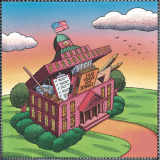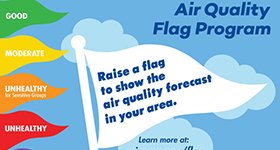Combating Air Pollution at Schools
Children are more vulnerable to air pollution than adults because their natural defenses and organs are still developing. They also breathe more frequently than adults, which means they take can more pollutants.
These resources are created for facilities managers, custodians, principals, administrators, and teachers.
Creating Healthy Indoor Air Quality (IAQ) in Schools

Make indoor air quality (IAQ) a priority in your school by implementing an IAQ management program. Find tools and resources from EPA’s IAQ Tools for Schools to develop and sustain an effective and comprehensive program using simple, low-cost actions to help save money, improve health, and decrease student and staff absenteeism.
Schools as Cleaner Air and Cooling Centers

These factsheets are designed to help schools and communities facing the consequences of climate change. As extreme weather events such as wildfires and heatwaves overlap with other stressors such as infectious diseases like COVID-19, it’s important for schools and their partners to work together to mitigate the health risks to students and the community.
Reducing Near-Road Pollution Exposure at Schools

This publication helps school communities identify strategies for reducing traffic-related pollution exposure at new and existing schools that are located downwind from heavily traveled roadways (such as highways), along corridors with significant trucking traffic, or near other traffic or vehicular pollution sources.
Air Quality Flag Program

This program uses brightly colored flags based on the U.S. EPA’s Air Quality Index (AQI) to notify people and their communities about outdoor air quality conditions. Schools can raise a flag each day that corresponds to their local air quality forecast and help teach and protect their students.
School Bus Idle Reduction
The Clean School Bus National Idle Reduction Campaign helps you take action toward a cleaner, healthier environment. You are the key to reducing idling!
Noise Pollution
Children often participate in recreational activities that can harm their hearing. These resources are designed for kids, teachers and parents to learn about protecting children's hearing and health.
